Ostwind follows the troubled teenager Mika as she is sent to her grandmother’s horse farm to study and help around the stables. Instead of helping, Mika hides in the stables and meets Ostwind, the horse responsible for Mrs. Kaltenbach’s riding injury. During their first encounter, Mika instantly feels connected to Ostwind and learns about the gift she has: she can speak horse language. When she realizes that her grandmother already contacted the slaughter about the horse, Mika gives everything to save Ostwind’s life and show Mrs. Kaltenbach that he is not a lost cause.
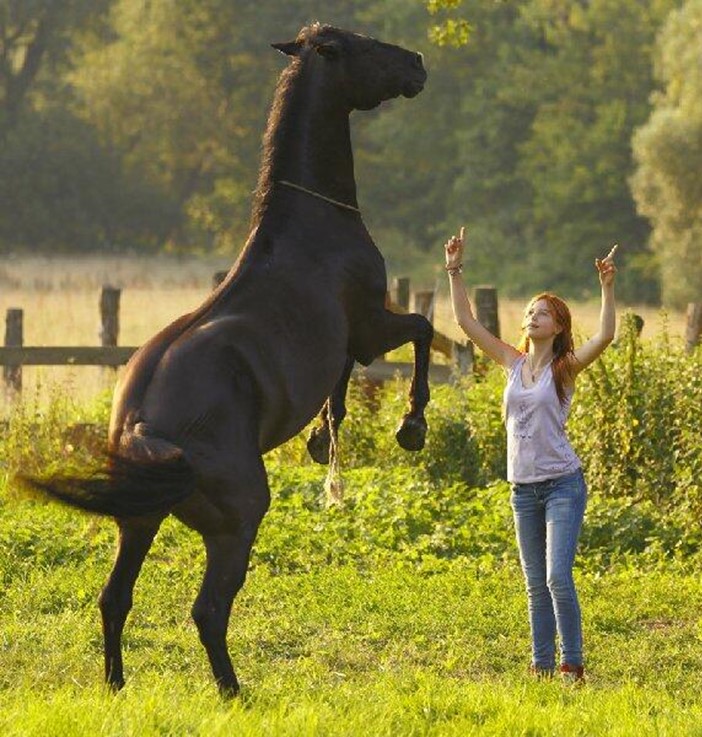
The film shows how different relationships with animals can be. Both Mika and Michelle attempt to train and ride their horses for show-jumping competition purposes. While Michelle and her horse work via control and obedience, Mika and Ostwind operate with trust. With the help of Ostwind, Katja von Garnier seeks to educate children on how to handle horses respectfully.
No matter the weather, Mika and Ostwind train a lot. Initially, she wears a helmet, sits on a saddle, and holds the reins. In later practices, Mika rides on his bare back, and Ostwind does not wear any equipment. At one point, Mika spreads her arms like she is about to fly and closes her eyes. She does not have to pull on the reins to show him where to go, she gently turns her upper body, and he follows her movement. We can tell that the girl fully trusts the horse. At the end of their training, she hugs him and smiles. The foundation of their connection is friendship and trust.
The film illustrates this trust and connection with the help of colours and lightning. Mika and Ostwind ride over green meadows along dark green firs under the blue sky. They blend into the nature they are surrounded by. At the end of their training, the sunlight illuminates Mika from behind and sets a warm mood for the whole scene. Juxtaposed with these scenes, Michelle and her horse practicing in the sand on the training square seem deary.
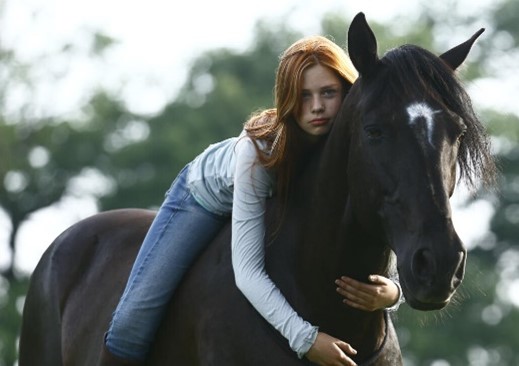
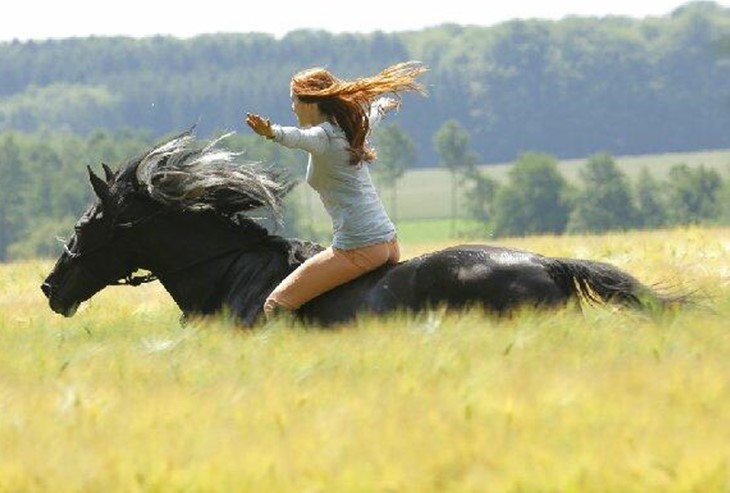
Mika finds a kindred spirit in Ostwind. Her fight for his recognition and liberation is also a fight for her own recognition and self-realization. She sees herself as a wild individual who does not fit into narrow structures. When she is on his back, riding through the meadows followed by the sun, both seem carefree and in perfect harmony.
The film portrays the concept of natural horsemanship, a basic training for horses and humans based on mutual communication, respect, and trust. Like humans, horses have different character traits and can be introverted, extroverted, confident, or shy. Various characteristics call for different care and training.
“Horsemanship can be obtained naturally through communication, understanding, and psychology versus mechanics, fear, and intimidation”
Pat Parelli
Scenes depicting horses almost always involve soft violins playing as background sounds. The film music evokes an epic feeling, emphasizing the magical moments between rider and horse. However, in most of Ostwind and Mika’s sequences, we cannot hear a single sound, just peaceful silence. She does not need words to communicate with him.
The name of Michelle’s horse is not mentioned in the film because it does not play an important role. Her horse is not an individual like Ostwind, and due to its lack of connection to the rider, the horse could be replaced.
The horse that Michelle is riding is saddled and wears tons of equipment. It even has that little metal stick in the mouth, making it easier to control the horse. Michelle holds the reins tightly and uses the switch when the horse does not move as she wants it to. She gets angry when the horse accidentally knocks over the obstacle and grows angrier when the horse shies away from one. Although we can see that the horse is afraid, Michelle does not care. After their session, she furiously hits her switch against the fence and scares her horse even more. All of Michelle’s scenes are shot in slow motion, allowing us to analyze in detail how she is treating the horse and what she is doing wrong. The only connection these two have is through work.
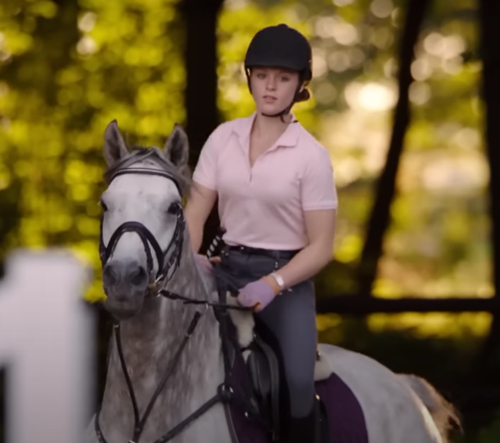
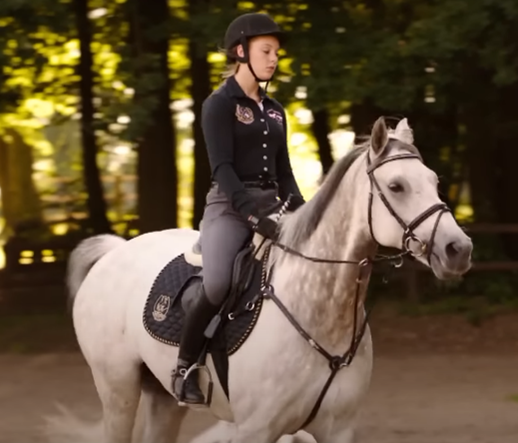
One second in that scene makes the impression that it was shot from the perspective of the horse. That second is very blurry. With the help of that scene, the producer enables the audience to put themselves in the horse’s position. To get a better understanding of how it must feel to gallop full speed towards an obstacle. After that moment, the horse slows down, refuses to jump, and leaves Michelle angry. Because the audience shared the horse’s view, they can relate to the decision not to jump. That demonstrates once again that Michelle is behaving morally unacceptable.
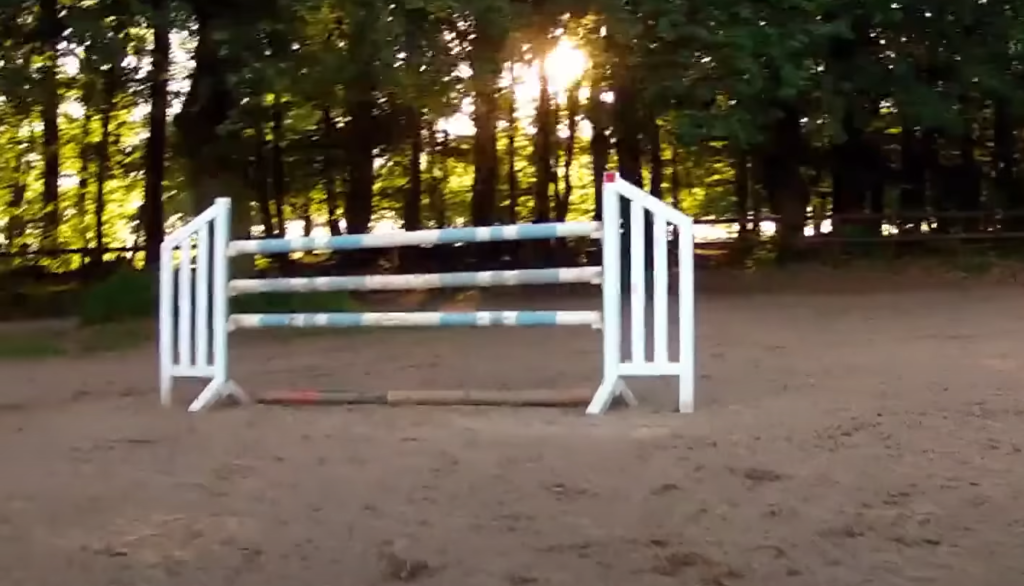
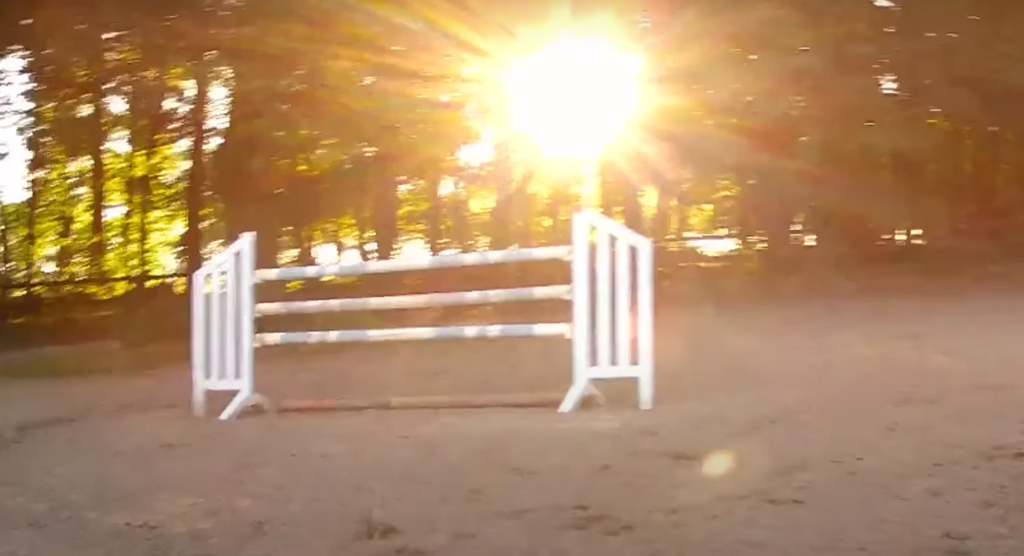
Contrary to the quiet scenes of Mika and Ostwind, Michelle’s scenes are particularly noisy, with most of the noise coming from the horse. There is the gallop, the clattering of the equipment, and we can listen to the horse breathe and whiny. The hit of the switch is also clearly audible. Furthermore, some sounds are echoing. When the horse stops in front of the obstacle and whinnies, and later, when it knocks over the obstacle and falls on the ground, we can hear the echoes. These highlighted and elongated noises allow us to concentrate on what is producing these sounds, namely a horse forced to gallop and jump. The sounds intensify the feeling that Michelle is not treating her horse right.
Michelle treats her horse differently than Mika treats Ostwind, but there are far worse examples of how humans treat horses, especially in competitions or championships.
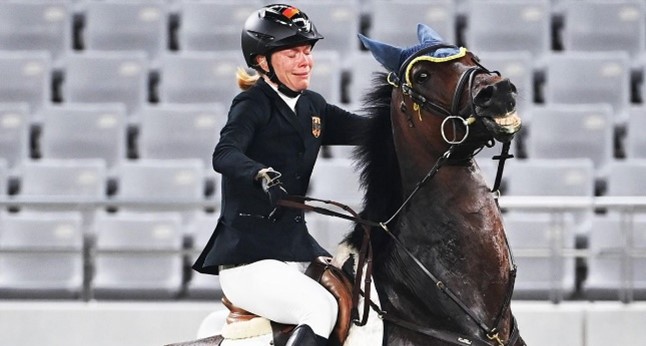
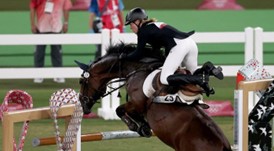
During the world championship in Tokyo in 2021, pentathlete Annika Schleu caused a pedestrian scandal and made the headlines. After being assigned to the horse Saint Boy and having only 20 minutes to get used to each other, the horse refused to enter the parkours and jump. Her national coach ordered her to hit the horse, to hit it hard. Following the scandal, the World Association of Modern Pentathletes decided to make reforms in November 2022: Show jumping will be replaced by an obstacle course.
“Annika Schleu hit it. At least nine times with the crop, and she also used the spurs several times. The national coach also hit the horse herself with her fist”
Sebastian Leber
Taking a closer look at Michelle’s horse and Saint Boy, both refusing to jump over the obstacle, one can see the similarity in their behavior. Both horses reared up and blared their teeth. If you pay close attention, you can identify when a horse feels uncomfortable.
Various camera angles and multiple shots are connected to give the viewer the overall impression of both relationships. That makes the juxtaposition of Mika and Michelle possible. The movie educates the audience on how humans can train and do sports with animals and still worship and respect them. One does not have to suppress and tame an animal.
Through slow motion scenes, the film music, and flying camera perspectives, Ostwind feels more like an exciting adventure movie than a girly horse film. Although the script spares no cliché concerning horse films, it still manages to tell a fascinating story about a magical connection between a horse and a human.

Bibliography
Pictures: https://www.deutscher-filmpreis.de/film/ostwind/
Movie: https://www.youtube.com/watch?v=-DHIL8XqdVQ
Soundtrack: https://open.spotify.com/track/5KVMAXCnLTLY2zpVtM80DM
Further readings
Ingle, Sean. “Modern pentathlon votes to ditch horse riding after Tokyo Olympic turmoil”. The Guardian, 2021
Leber, Sebastian. “Hau mal richtig, hau richtig drauf! – Was wurde aus der Berliner Fünfkämpferin Annika Schleu“. Tagesspiegel, 2023
Parelli, Pat. Natural Horse-Man Ship. Western Horseman, 1993
Torinus, Gregor. “Ostwind – Zusammen sind wir frei“. Filmstarts, 2013